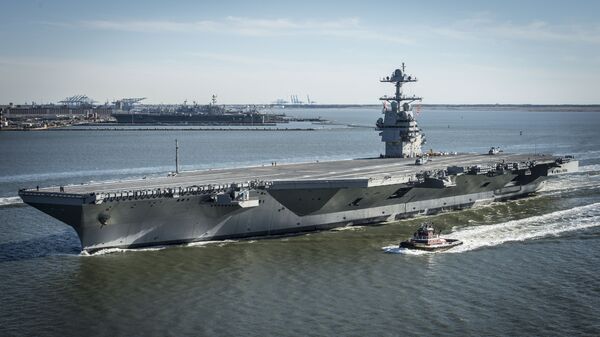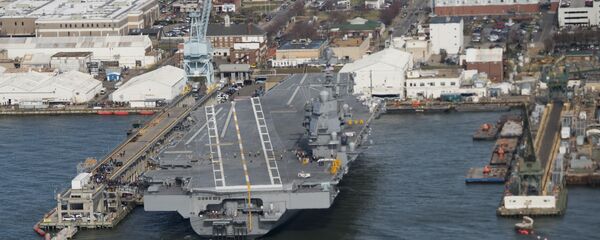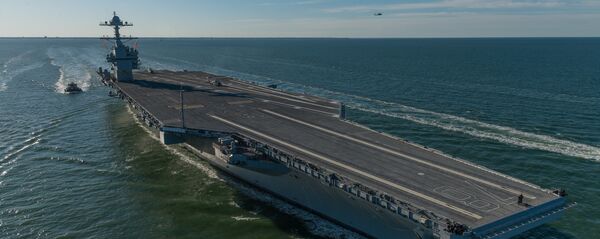"How can Russia and China respond? By simply doing what they have been doing – by developing regional air defense systems so that they could show Americans that 'we would shoot down your warplanes launched from the aircraft carrier and deal damage to you' when necessary," he said.
Fenenko, an associate professor at Moscow State University's World Politics Department, added that the addition of the USS Gerald R. Ford to the US naval fleet would not alter the balance of power in the Asia Pacific region.
Fenenko added that China has long wanted to develop a maritime force capable of operating globally, but Beijing cannot reach this goal due to Taiwan.
"It is impossible to create a comprehensive blue-water navy without making Taiwan a part of China. Taiwan has prevented China's large subsurface ships from moving beyond the coastline," the analyst explained.
The USS Gerald R. Ford, manufactured by Newport News Shipbuilding, is the lead ship of her class intended to replace the Nimitz-class supercarriers. The nuclear-powered vessel has a displacement of approximately 100,000 tons. It is capable of carrying more than 75 aircraft due to an expanded flight deck. The ship will be armed with RIM-162 Evolved SeaSparrow and RIM-116 Rolling Airframe missiles produced by Raytheon.
The US Navy is expected to place the USS Gerald R. Ford into active service this summer, but the $12.8 billion supercarrier would become fully operational in 2020.
Russian military analyst Vladimir Evseev, the head of the Department of Eurasian Integration and Development of the Shanghai Cooperation Organization (SCO) at the Institute of CIS countries, pointed out that China is catching up with the US when it comes to ships intended for continuous service.
"China is likely to respond to [Washington building aircraft carriers] by manufacturing its own vessels," he added.
Never miss a story again — sign up to our Telegram channel and we'll keep you up to speed!



